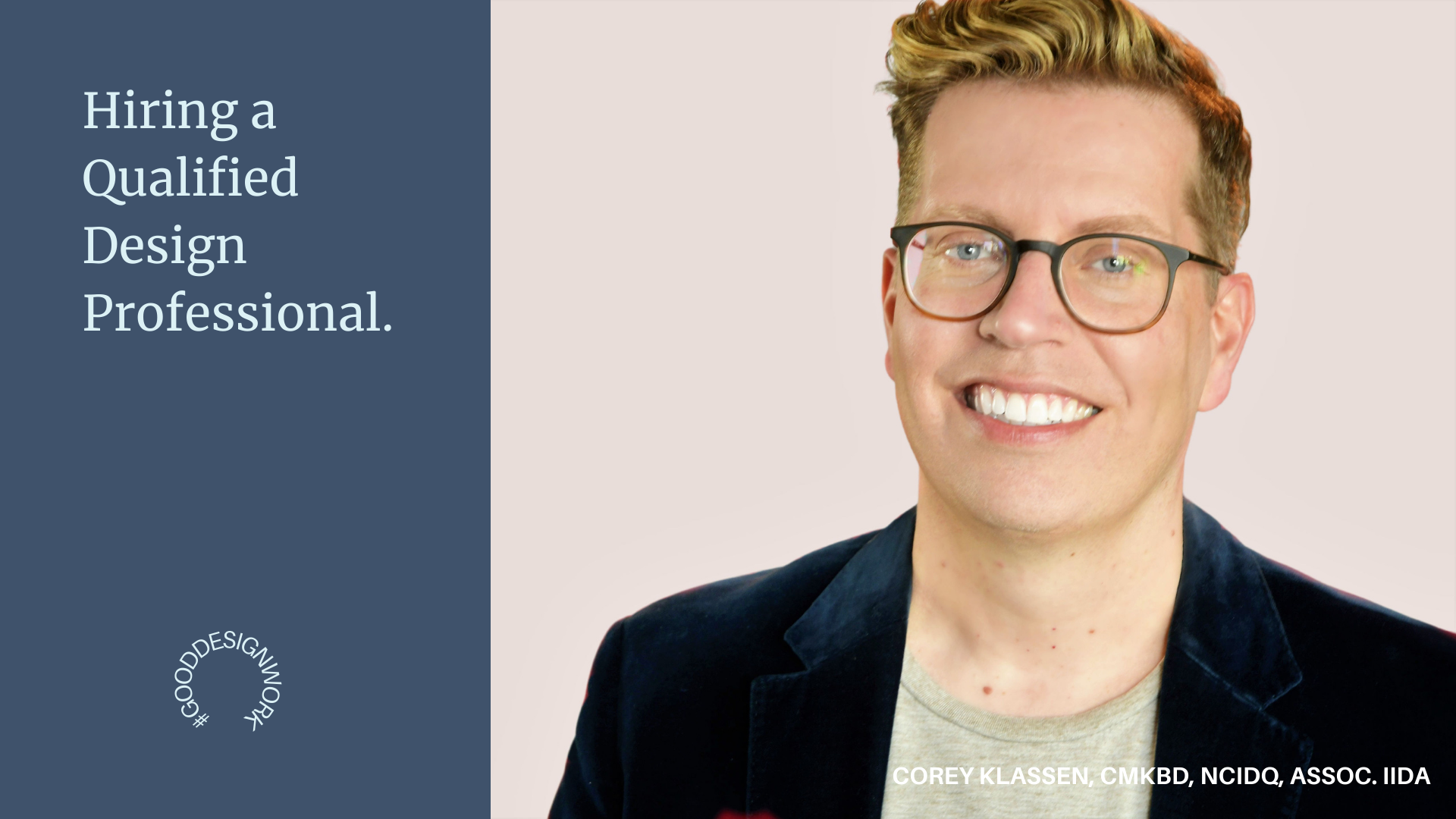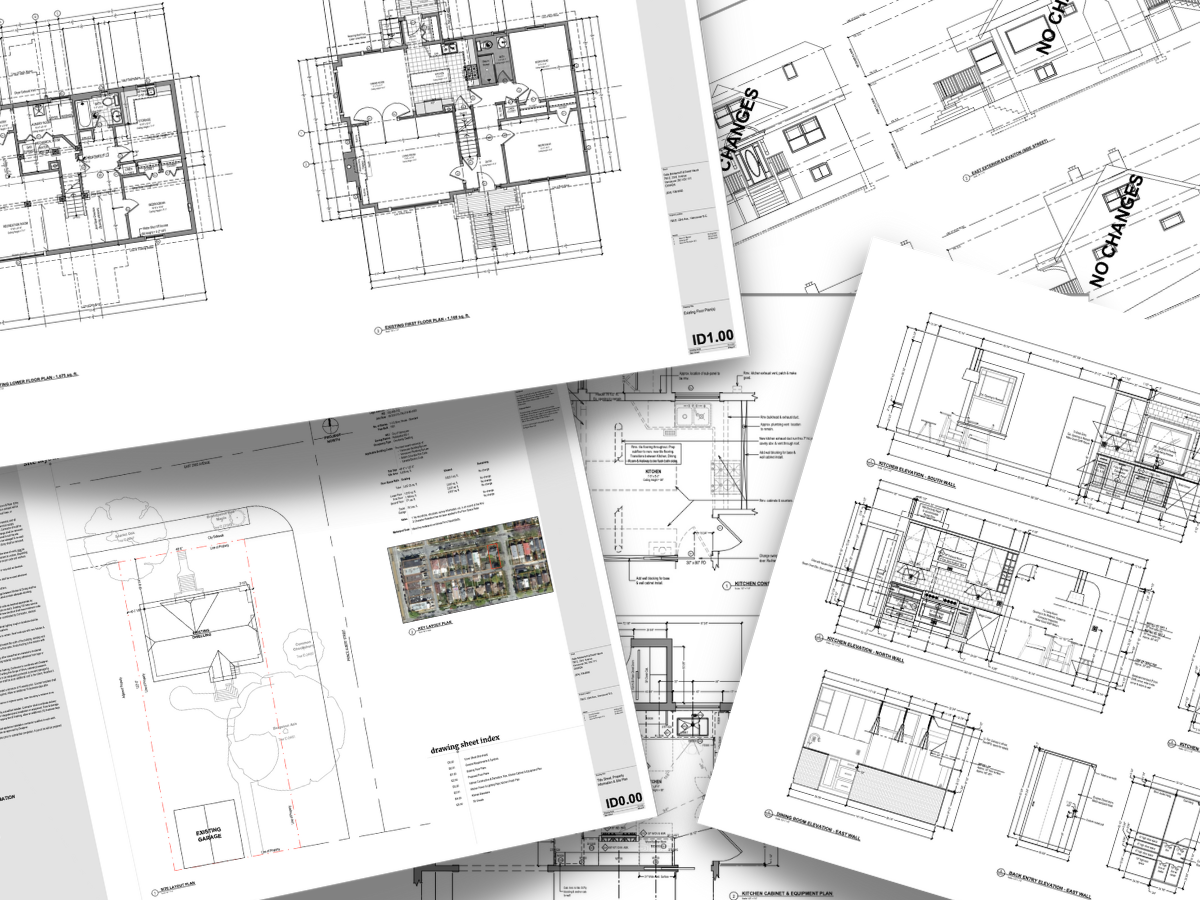Design 101: Hiring The Best Design Professional
How a designer can help you the best way possible
Most home and business owners are challenged when hiring qualified professionals for a design project. There are many questions and concerns that arise and sometimes the resulting consultant hired is neither qualified or the best fit. Do you need an Architect? An Engineer? If so, what kind of Engineer? An Interior Designer? A Kitchen & Bath Designer? A decorator? Will they work well with my prime contractor and their tradespersons? There is a lot of terminology and types of qualifications to sift through, but consider that hiring a qualified design professional is somewhat like a comprehensive insurance policy for the overall design work involved.
At the heart of what a qualified design professional will do for home and business owners are three core priorities to protect the health, safety, and welfare of the occupants in every space. This means comprehensive applied skills and knowledge with designing code-compliant physical environments is essential to the success of every project. It is not just about the beautiful photographs of a kitchen or collaborative workspace, it is about how well all the elements of furnishings, fixtures, finishes and equipment support the three priorities. The design professional should have extensive knowledge on the elements and principles of design, constructions drawings, procurement, and overall project coordination. They do not need to be experts in construction techniques, but they do need to know how to protect the safety of occupants through fire-resistance assemblies, materials, and building systems while providing access to daylight, functional design areas, good air quality and more.
Who are the design experts you can trust?
There are no standard of qualification to be labeled expert in anything or regulated control on the use of being any kind of expert. These days, a design expert has come to be defined by someone who has made the same mistake at least twice before you. For example, anyone can hang a shingle and call themselves an interior designer despite having no experience or education in the field. While certain titles and certifications are earned and awarded (more on this below), and some titles are protected under the law, this makes it very difficult for owners to filter through who is qualified and who is not.
Does the media influence design?
Influencers have emerged through the age of blogging and social media, specifically on platforms like Instagram and TicTok. Some influencers have turned into television media personalities. We would be remiss if we did not state that it is very easy for anyone to be influenced on social media, and it is a type of human condition that we will continue to explore as a society for years to come, but we must do our own diligence and fact check statements and exhibited behaviours because we can be unknowingly influenced.
For example, while lying in the dentist chair, we are often exposed to HGTV during a routine cleaning. While watching, the saga unfolds and the drama hits certain points along the show’s timeline. It always seems to go something like this:
Contractor to designer: “We have to talk privately outside for a moment; it’s urgent.”
Designer holding coffee cup in hand, “Oh no, what’s wrong now?”
Outside, the contractor and designer discuss the situation.
Contractor: “We found asbestos in the ceiling, and the whole ceiling has to come out.”
The designer rolls her eyes at the camera and says, “Well, that’s going to eat into my budget!”
This is called “show/story editing” and is falsely manufactured by producers for influence. There is no mention of the hazardous waste removal requirements, no mention of how important the testing is to the health, safety, and welfare of the homeowners and workers for this cancer-causing agent, and there was certainly no mention that the testing was already completed before construction commenced (as is required by law) instead of during mid-construction. The situation was manufactured, which proves my point that we need to be aware of what we consume as influence because it is likely to be false.
The 5 Key Types of Qualified Design Professionals
Registered Architect
An Architect has been tested and accredited by the legislative body in the state or province/territory in North America. They must pass this examination in order to use the title. An undergrad or masters degree in architecture does not make someone an Architect, but it does not mean that they could not be called a building designer, never sit for the examinations, and still do amazing work.
Registered Architectural Technologist
The same rules apply to this professional title where the professional must be accredited by the legislative body in the state or province/territory in North America. Generally a 2-year diploma is needed to qualify for this examination process, but here again it does not mean that the title building designer could not be used. This is rather an uneven footing for someone who may have more education.
Certified Interior Designer
An interior designer is qualified by means of education, experience, and even the NCIDQ examination. Interior designers are unregulated in most states and provinces/territories however like all other industries unregulation isn’t necessarily a bad thing when someone is a fantastic interior designer. The minimum education is a 2-year diploma from a registered institution but there are also undergraduate and master degrees. Our NCIDQ Certification and what it can mean for your project!
Certified Kitchen & Bath Designer
These specialists are also qualified by means of education, experience and even the CKBD/CMKBD examination. Many of these professionals came to the industry by unconventional means and may not have any specialty education, but their experience and knowledge also make them strong design professionals in their own right. However, being able to lay-out cabinets and sell them to end-consumers may not necessarily meet the same qualifications as a design professional who has designed all aspects of the physical space.
Decorator
These specialists are unregulated and do not require any education or experience to use the title or sell their services and products. However, there are Accredited Decorator certification routes that required education and experience.
What is the difference between an Architect and an Interior Designer?
Admittedly, there are noticeable overlaps and differences between what a qualified architect does and what a qualified interior designer does. In a recent practice study analysis between NCARB and CIDQ, 83% of an NCIDQ Certified Interior Designer’s knowledge area had some definable similarity to that of a Registered Architect. Yet, every province and territory has some limits to practice areas, mostly on the size of projects, that have been legislated by the Architects Act (soon to be the Professional Governance Act) and that are further defined by the applicable association bylaws.
What is the difference between an Interior Designer and a Kitchen & Bath Designer?
Although Certified Interior Designers learn about cabinetry, millwork, planning, and other generalities of kitchen and bath design, they often do not specialize in kitchens, baths, home gyms, home offices, laundry rooms, and more. Notably, these are the most expensive areas in every residence to design and renovate, and hiring a Certified Kitchen and Bath Designer provides additional assurances of quality, standards, and continued knowledge as markets and technology change.
Hiring us as your Design Professional
At Articulated, we believe that our high-level design credentials, formal education, portfolio of work, and ongoing educational requirements are essential to every project’s success. The hallmark of a true design professional is one who is pursuant to excellence in their field of practice, and we believe that we have established that forum of excellence.
Written by Corey Klassen, CMKBD NCIDQ IIDA








